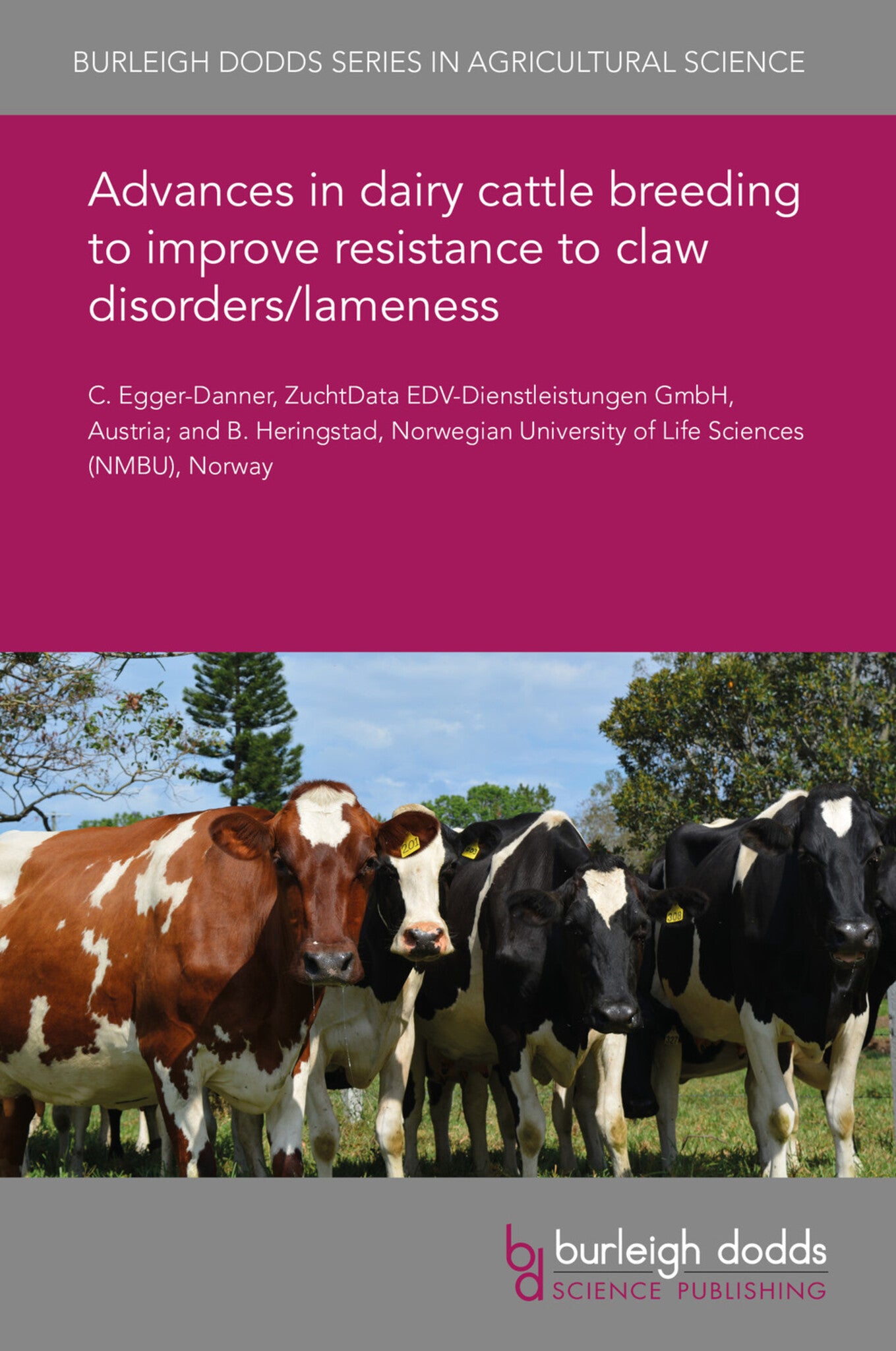We're sorry. An error has occurred
Please cancel or retry.
Advances in dairy cattle breeding to improve resistance to claw disorders/lameness
Regular price
£25.00
Sale price
£25.00
Regular price
£0.00
Unit price
/
per
Sale
Sold out
Re-stocking soon
Foot and claw disorders are, along with reproductive and udder health problems, major reasons for involuntary culling in dairy cattle. Culling due to lameness accounts for 8-15% of all culls. This ...
Read More

Some error occured while loading the Quick View. Please close the Quick View and try reloading the page.
Couldn't load pickup availability
- Format:
-
23 December 2019

Foot and claw disorders are, along with reproductive and udder health problems, major reasons for involuntary culling in dairy cattle. Culling due to lameness accounts for 8-15% of all culls. This chapter describes the key factors needed to achieve genetic improvement of claw health and discusses the challenges. It covers the various steps in breeding from the definition of the breeding goal, performance recording (phenotyping) with standardization and measures to improve data quality, genetic evaluation with the genetic background of traits, trait definitions, data validation and models, including aspects of genomic evaluation, direct and indirect selection for claw health and the possible impact on genetic gain. The chapter provides examples of successful implementation into routine breeding programmes and offers recommendations and examples of best practice. Finally, the chapter looks ahead to future research trends in this area and makes suggestions for further reading on the subject.

Price: £25.00
Publisher: Burleigh Dodds Science Publishing
Imprint: Burleigh Dodds Science Publishing
Series: Burleigh Dodds Series in Agricultural Science
Publication Date:
23 December 2019
ISBN: 9781786765604
Format: eBook
BISACs:
TECHNOLOGY & ENGINEERING / Agriculture / Sustainable Agriculture, Dairy farming, TECHNOLOGY & ENGINEERING / Agriculture / Animal Husbandry, Sustainable agriculture, Animal husbandry, Animal breeding

1 Introduction 2 Breeding goals 3 Data sources of phenotypes 4 Genetic evaluation 5 Selection and genetic gain 6 International developments in improving claw health and lameness 7 Conclusion 8 Future trends 9 Acknowledgements 10 Where to look for further information 11 References



